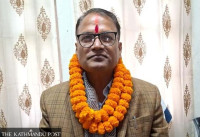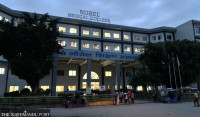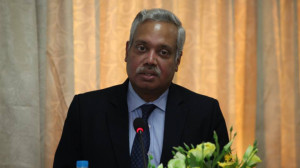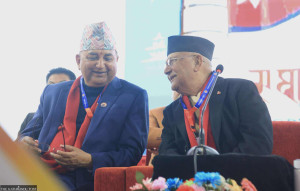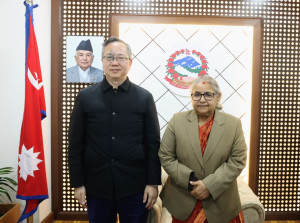National
Driver’s negligence tops list of road accident causes
More than 50 people died and several others were injured in three major road accidents on October 28 and October 30.
Chandan Kumar Mandal
More than 50 people died and several others were injured in three major road accidents on October 28 and October 30.
The deadly crashes once again have brought to the fore several aspects of road safety in Nepal.
In most of the cases, driver’s negligence has been blamed, but experts also point at other areas like bad roads, poor infrastructure, lack of monitoring and old vehicles among others.
When a passenger bus en route to Kathmandu from Rajbiraj plunged into the Trishuli river in the wee hours of October 28 at Gajuri in Dhading, 31 people died. The death toll reached 32 on Thursday after one more body was recovered. Three are still missing.
According to survivors, the driver had consumed alcohol. Speeding, a survivor said, was the cause of the accident, as the driver had consumed alcohol and he was on a high.
It means there was no traffic police checking on the way.
Two days later, a speeding microbus rammed into a jeep at a bend in Gulmi Durbar Rural Municipality-4 and fell 500 metres below the road. Eleven people were killed.
Dor Bahadur Thapa, chief of District Traffic Police Office, Gulmi, told the Post’s district correspondent after the crash that the road where the incident happened “is wide enough and in good condition”. “The crash, it seems, is a result of careless driving,” he said.
Ashish Gajurel, a transportation and traffic engineer, said there are several factors that result in road accidents in Nepal but driver’s negligence is to blame on most of the occasions. “Bad roads, old vehicles, drink and driving, overload, ignoring traffic rules and lack of infrastructure like barriers on the roadsides are major causes of road accidents,” he said.
According to Nepal Police data, driver’s negligence accounted for nearly 74 per cent of all the road accidents in the fiscal year 2016-17. Of the total 10,178 road accidents recorded in the last fiscal year, 7,487 incidents happened due to sheer negligence on the part of drivers.
“Condition of roads is pathetic. So is the condition of vehicles plying the roads. On top of that road users are not disciplined and these simply make a recipe for disaster,” said the traffic engineer.
The country has witnessed a surge in number of road accidents in the last three years. According to police data, 2014-15 saw 9,146 road accidents with 2,004 deaths. The number of road accidents rose to 10,013 in 2015-16 which killed 2,006 and to 10,178 in 2016-17 which claimed 2,384 lives.
Last fiscal year, 13.7 percent road accidents were due to speeding, according to police. In the last fiscal year, the number of deaths has seen a staggering growth of nearly 19 per cent. A top traffic police official, however, said he would not blame drivers only for the fatal crashes.
“Drivers may have been responsible on many occasions. But we cannot deny the fact that our infrastructure and roads are poor,” said the official who preferred anonymity. “The state must pay proper attention to infrastructural aspects, roads must be kept up to date.”
On monitoring, he said traffic police had upped monitoring and checking during the Dashain festival. He, however, admitted that there has been lax monitoring in districts when it comes to checking drink driving, overload and speeding among others.
Department of Traffic Management (DoTM) officials also said that driver’s negligence, bad roads and lack of infrastructure were the major causes of road accidents.
The DoTM has launched a five-year action plan (2015-2020) with an aim to bring down the number of road accidents by half.
“But we have not been able to decrease the number of road accidents,” admitted Tok Raj Pandey, spokesperson for the DoTM, adding that driver’s negligence, poor infrastructures and weak monitoring together result in accidents. The DoTM said there must be special programmes targeting drivers and other public transportation staff to make them more responsible.
The DoTM had provided counselling to 400 drivers and their helpers last year, according to Pandey, who is also the director of the DoTM.
“We have been trying to educate transportation staff through various programmes. However, we cannot expect results overnight,” added Pandey.




 9.12°C Kathmandu
9.12°C Kathmandu



